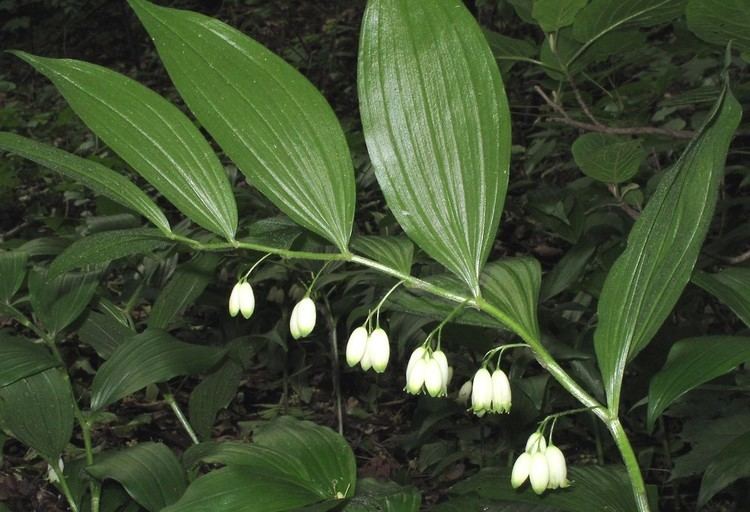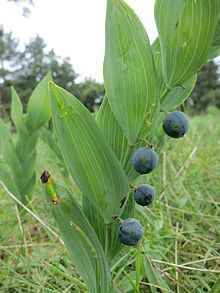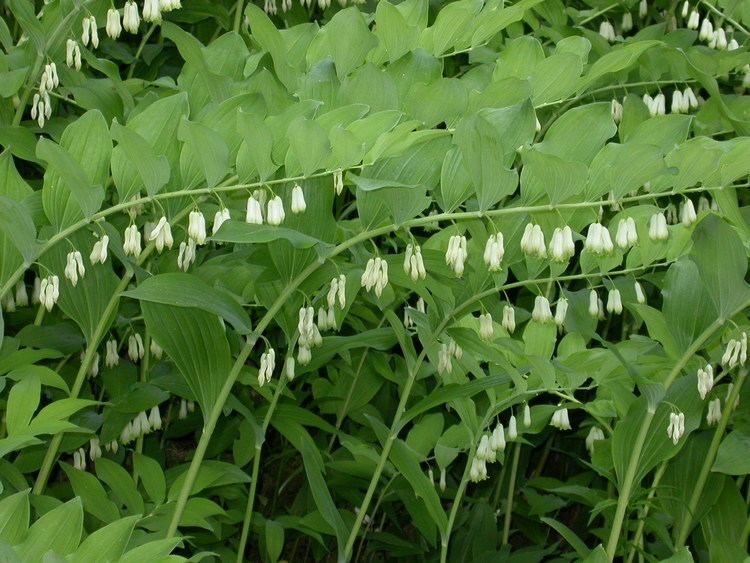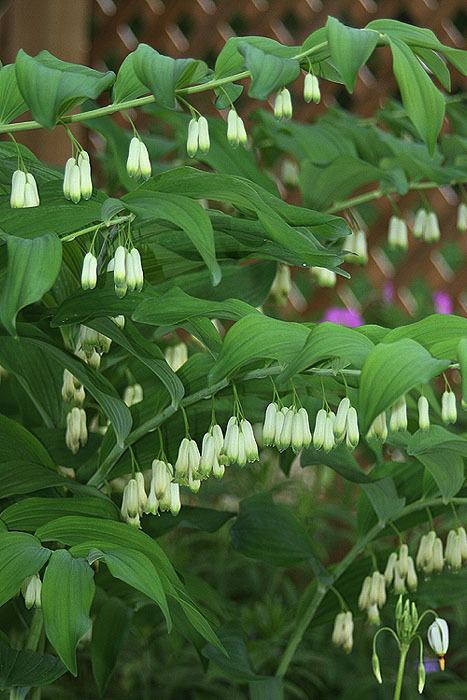Clade Monocots | Clade Angiosperms Scientific name Polygonatum Rank Genus | |
 | ||
Lower classifications Angular Solomon's seal, Polygonatum multiflorum, Huang jing, Polygonatum biflorum | ||
Polygonatum /ˌpɒlᵻˈɡɒnətəm/, also known as King Solomon's-seal or Solomon's seal, is a genus of flowering plants. In the APG III classification system, it is placed in the family Asparagaceae, subfamily Nolinoideae (formerly the family Ruscaceae). It has also been classified in the former family Convallariaceae and, like many lilioid monocots, was formerly classified in the lily family, Liliaceae. The genus is distributed throughout the temperate Northern Hemisphere. Most of the approximately 63 species occur in Asia, with 20 endemic to China.
Contents
- Jayne lampley a phytochemical analysis of the medicinal plant polygonatum biflorum
- Etymology
- Description
- Species
- Gardening
- Food
- Traditional medicine
- References

Jayne lampley a phytochemical analysis of the medicinal plant polygonatum biflorum
Etymology

"Polygonatum" comes from the ancient Greek for "many knees", referring to the multiple jointed rhizome. One explanation for the derivation of the common name "Solomon's seal" is that the roots bear depressions which resemble royal seals. Another is that the cut roots resemble Hebrew characters.
Description
The fruits are red or black berries.
Species
As of June 2014, the World Checklist of Selected Plant Families accepts 74 species and hybrids:
Gardening
Several species are valued as ornamental plants, including:
Food

Many species have long been used as food in China. Leaves, stems, and rhizomes are used raw or cooked and served as a side dish with meat and rice. The rhizomes of two local species are eaten with chicken's or pig's feet during festivals. The rhizomes are used to make tea or soaked in wine or liquor to flavor the beverages. They are also fried with sugar and honey to make sweet snacks. The starchy rhizomes can be dried, ground, and added to flour to supplement food staples. The rhizome of P. sibiricum is pulped, boiled, strained, and thickened with barley flour to make a sweet liquid seasoning agent called tangxi. At times, people in China have relied on P. megaphyllum as a famine food.

The shoots of some Polygonatum can be boiled and used like asparagus. P. cirrifolium and P. verticillatum are used as leafy vegetables in India. The American species P. biflorum has a starchy root that was eaten like the potato and used as flour for bread.
P. sibirica is used for a tea called dungulle in Korea.
Traditional medicine
The traditional use of Polygonatum in the treatment of diabetes was first observed in 1930 by Hedwig Langecker. After experiments, she concluded that it was effective in fighting nutritional hyperglycemia, though not that caused by adrenaline release, probably due to its glucokinin content.
P. verticillatum is used in Ayurveda as an aphrodisiac. It is also used to treat pain, fever, inflammation, allergy, and weakness.
An herbal remedy called rhizoma polygonati is a mix of Polygonatum species used in traditional Chinese medicine. It is supposed to strengthen various organs and enhance the qi. Polygonatum is believed to be restorative to mental vitality, especially when the mind has been overworked, overstressed, or is in a state of exhaustion.
